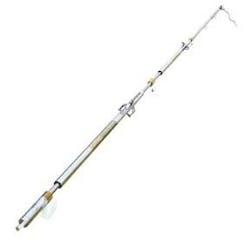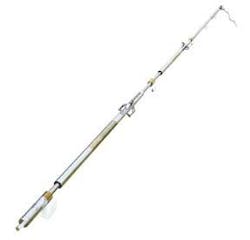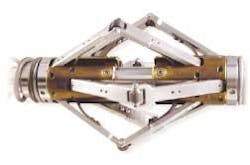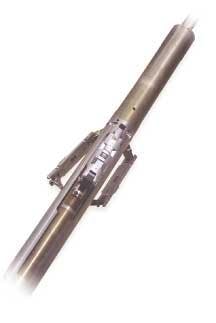Drilling & Production
Downhole tractor, real-time
Although operators originally used wireline tractors in the North Sea, their use has spread to other global locations. Today, operators consider wireline tractors reliable for deploying logging, perforating, and mechanical services in highly deviated and horizontal wells and cost-effective as an alternative to drill pipe and coiled tubing.
According to Bruce Henderson, Expro Group’s global operations manager of tractor solutions, Expro has a new robotic tractor designed for use in high-angle wellbore interventions that standard wireline techniques cannot address. It has the ability to apply 1,000 lb of force either up or down in the well bore. This, he says, makes it ideal for carrying out a wide range of cased-hole wireline services that can be deployed on the tractor via mono-conductor or multi-conductor cable.
To date, operators have used the tractor in the US, Canada, and the North Sea, and Expro has received enquiries from other areas.
The tractor attaches to the end of any suitable electric logging cable with a designated tool to accomplish a specific task, with the tractor in an unpowered mode until needed for the high-angle section. Once activated, the tractor conveys everything to the end of the well. Operators can disassemble the tractor into four modules for ease of transport.
“We did a sump packer job for a major operator in the deepwater Gulf of Mexico, round tripping to 21,000-plus ft in 17 hr, and it was estimated that using drillpipe would have required 40 hr,” Henderson said. “Another job was performed on a jackup drilling rig, where a cement bond log was run in a 7-in. liner, taking 7 hr, versus the normal 25 hr using pipe.”
In another case, Henderson says, the tractor was below the wellhead for less than 1 hr and tractored 240 ft in high angle in only 8 min. This was the first ever thru-tubing inflatable packer intervention on a tractor in the GoM, he said. An operator performed the job from a lift boat, and the tractor replaced coiled tubing as the method of intervention. Dock-to-dock, the tractor reduced the time taken to do the entire operation to 30 hr from a typical 5-6 days with coiled tubing.
“The economics of tractor deployment versus coiled tubing allowed the same operator to bring a perforating job previously delayed to the following fiscal year because of budget restraints, into the current budget year,” Henderson said.
The job encompassed a short rigup and 6 hr below the wellhead with 2 1/8-in. guns tractoring thousands of feet inside 2 7/8-in. tubing using its surface-controlled anchor arms to squeeze the tractor through tight restrictions. The operator chose this tractor over other systems because of its bi-directional ability of 1,000-lb upward force from below the cablehead, which can reduce risk in the event the tractor encounters tight conditions. After perforating, the well resulted in a successful gas well months ahead of schedule.
null
On another high-angle offshore well over 20,000 ft deep, the operator used the tractor for insurance on a bridge-plug run. Although the tractor was almost needed it in a tight section of the wellbore, it was not switched on. The round trip with the tractor took less than 6 hr to rig up and rig down, saving the operator 26 hr compared to using drillpipe.
Expro designed the tractor to use electrical power, and it runs with most sizes of electric lines and standard logging equipment.
Located directly between the cablehead and the logging tools, the tractor free falls on electric line until the deviation of the well requires tractoring to begin. The first anchor sets against the wall of the wellbore, and the tool powers forward through the anchor. Once the tractor reaches the end of the stroke, a second anchor sets. The first anchor retracts while the tool powers through the second anchor, resulting in virtually continuous movement. The 2 1/8-in. tractor operates in hole diameters ranging from 2 7/8-in. tubing to 11 3/4-in. casing and in various sizes of drill pipe. Larger hole sizes are possible.
null
All jobs are modeled prior to the operation using a third-party proprietary software, so that operators can predict and optimize tractor force, identifying areas of potential risk.
Traditionally, stand-alone wireline work stopped at well angles of about 60°, and above that level, drill pipe intervention took over. There has been an industry perception that wireline cannot be used in angles greater than 60°. Some operators have admitted this influenced their well designs and that they keep angles below 60° if possible to avoid expensive drillpipe or coiled tubing interventions. However, now that a wireline-tractor combination can be used to as high as 92° or beyond, operators are rethinking well design, with tractor intervention as a first-choice method.



